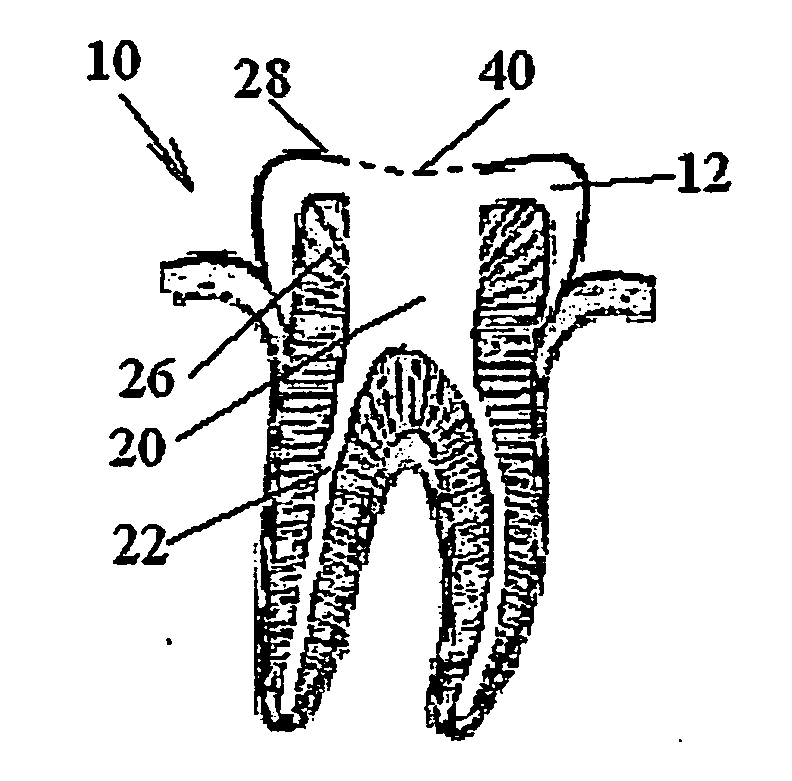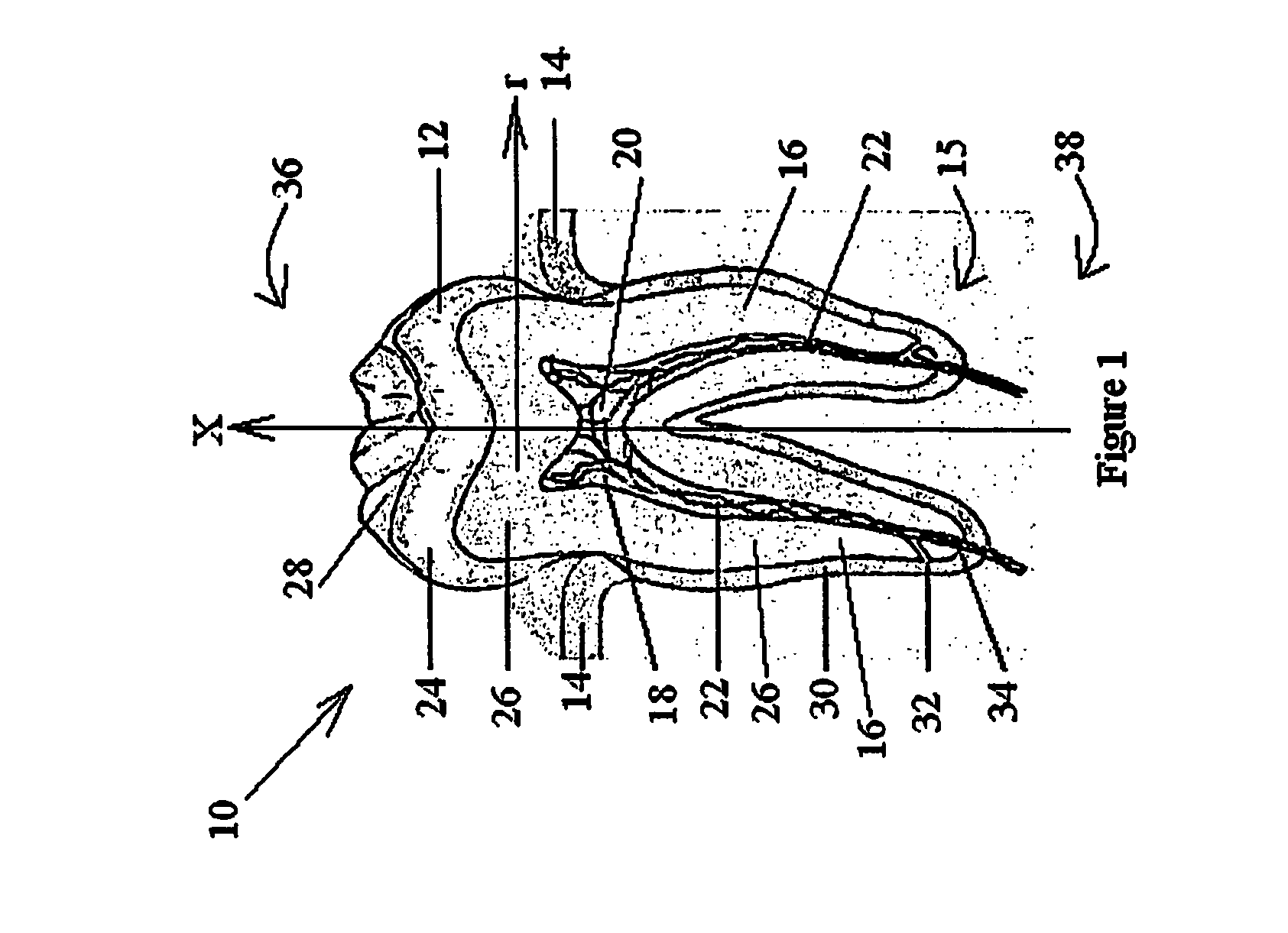Photo-sterilization
a technology of photo-sterilization and endodontics, applied in the field of endodontics or root canal therapy, can solve the problems of lingering latent infections, sensitivity to hot or cold foods and pain, and the repair itself dies, and achieves the effects of high light transmission, low cost, and unbreakabl
- Summary
- Abstract
- Description
- Claims
- Application Information
AI Technical Summary
Benefits of technology
Problems solved by technology
Method used
Image
Examples
example 1
Single Bacteria Layer
[0369] Referring further to the drawings, FIGS. 18A-18E schematically illustrate a single-bacterial-layer, UV irradiation test.
[0370] As seen in FIGS. 18A and 18B, illustrating side and top views respectively, a bottom of a petri dish 200 was covered with a highly diluted bacterium solution 202, to a thickness just sufficient to wet it. It was known by statistical evaluation, that at that thickness, bacterium solution 202 contained only a single layer of bacteria.
[0371] A plurality of petri dishes 200 were prepared in this manner, and one was kept as a control.
[0372] As seen in FIG. 18C, except for the control dish, each petri dish 200 was placed in a Bio-Link Irradiator 204, for irradiation under a UV light 206, produced by a series of mercury lamps 208.
[0373] Each petri dish was irradiated at a different irradiation density, for example, 0.001 Joul / cm2, 0.002 Joul / cm2, 0.003 Joul / cm2, up to about 0.01 Joul / cm2.
[0374] As seen in FIGS. 18D, after irradiati...
example 2
Multi Bacteria Layer
[0378] Referring further to the drawings, FIGS. 20A-20D schematically illustrate a multi-bacterial-layer, UV irradiation test. The purpose of the multi-bacterial-layer was to evaluate the protective effect (screening effect) of the outermost bacterial layers over inner bacterial layers, from irradiation.
[0379] As seen in FIG. 20A, to imitate the effect of protective bacterial layers, a multi-layer setup 212 was constructed as follows: petri dish 200, with highly diluted bacterium solution 202, to a thickness just sufficient to wet it, was covered with a second solution 218, of a height and concentration of several bacterial layers. Second solution 218 was placed in a glass container formed of top and bottom neutral density filters 214, whose absorption factor of UV light was known, so that the absorption effect of the glass container could be taken into account. Spacers 216 were glued to the two neutral density filters 212, and the inner space, defined therein,...
example 3
Intra-Canal UV Irradiation Test
[0385] Referring further to the drawings, FIGS. 21A-21H schematically illustrate an intra-canal UV irradiation test, using a diffuser, in accordance with the present invention and in a manner similar to that taught, for example, by FIG. 7B, hereinabove.
[0386] As seen in FIG. 21A, root canals 222 of a dog tooth 220 were cleaned. Tooth 220 was then placed in an autoclave, for sterilization.
[0387] As seen in FIG. 21B, a medium 224 containing bacteria was introduced into root canals 222 of tooth 220 and allowed to incubate for a period of two days.
[0388] As seen in FIG. 21C, after incubation, a control sample of bacterial medium is 224 was taken from root canal 222, and placed in petri dish 200, to a single bacterial thickness, forming a control perti dish.
[0389] As seen in FIG. 21D, root canals 222 were irradiated via diffuser 72, coupled to light source 62 of a mercury-lamp ultraviolet light, as taught in conjunction with FIG. 7B, hereinabove. Based...
PUM
| Property | Measurement | Unit |
|---|---|---|
| thick | aaaaa | aaaaa |
| thick | aaaaa | aaaaa |
| length | aaaaa | aaaaa |
Abstract
Description
Claims
Application Information
 Login to View More
Login to View More - R&D
- Intellectual Property
- Life Sciences
- Materials
- Tech Scout
- Unparalleled Data Quality
- Higher Quality Content
- 60% Fewer Hallucinations
Browse by: Latest US Patents, China's latest patents, Technical Efficacy Thesaurus, Application Domain, Technology Topic, Popular Technical Reports.
© 2025 PatSnap. All rights reserved.Legal|Privacy policy|Modern Slavery Act Transparency Statement|Sitemap|About US| Contact US: help@patsnap.com



